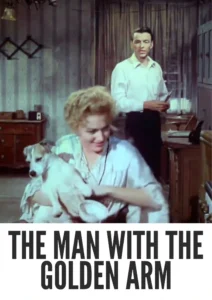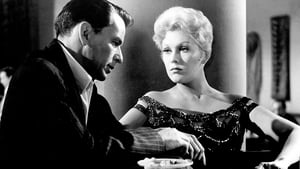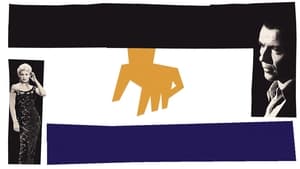Video Sources 0 Views
- Watch trailer
- The Man with the Golden Arm 1955 Colorized


Synopsis
Table of Contents
Toggle
Enter the visceral world of The Man with the Golden Arm, a groundbreaking drama from 1955, now vividly colorized to amplify its raw emotional power. Starring Frank Sinatra in a career-defining performance, and the captivating Kim Novak, this film fearlessly tackles the harrowing realities of addiction, gambling, and societal stigma. More than just a cinematic experience, this film offers a powerful and unflinching look at one man’s battle against his inner demons. Perfect for those who appreciate bold storytelling and unforgettable performances, this HD download brings a controversial and important film to a new generation.
The Man with the Golden Arm centers on Frankie Machine (Frank Sinatra), a talented card dealer and aspiring jazz drummer recently released from prison where he battled his crippling heroin addiction. As Frankie returns to his old neighborhood, he dreams of making a clean break and pursuing his musical aspirations. However, the allure of his past life, coupled with the pressures of his manipulative wife, Zosh (Eleanor Parker), and his former drug connections, threaten to pull him back into the depths of addiction.
As Frankie struggles to stay clean, he faces constant temptations and betrayals. His old friend, Sparrow (Arnold Stang), provides support, while the seductive Molly (Kim Novak) offers a glimmer of hope for a new beginning. But the relentless grip of heroin tightens, leading Frankie down a path of desperation, crime, and self-destruction. Ultimately, The Man with the Golden Arm is a harrowing portrayal of addiction’s destructive power and one man’s desperate fight for redemption against overwhelming odds.
The Man with the Golden Arm features unforgettable performances from a stellar cast:
-
Frank Sinatra as Frankie Machine
-
Kim Novak as Molly
-
Eleanor Parker as Zosh Machine
-
Arnold Stang as Sparrow
-
Darren McGavin as Louie
The Man with the Golden Arm boldly transcends typical genre boundaries, delivering a gritty addiction drama with elements of film noir. Its unflinching exploration of taboo subjects and its realistic portrayal of urban decay set it apart from conventional Hollywood fare.
Released in 1955, The Man with the Golden Arm sparked controversy for its frank depiction of drug addiction, a subject rarely addressed in mainstream American cinema at the time. Director Otto Preminger challenged the Motion Picture Production Code, pushing the boundaries of what was considered acceptable on screen. The film’s success paved the way for more realistic and socially conscious films in the years that followed. While The Man with the Golden Arm may not be as widely discussed as some of Sinatra’s other films, it remains a landmark achievement in its unflinching portrayal of a dark and often ignored corner of society.
This colorized version of The Man with the Golden Arm has been meticulously restored, enhancing the film’s visual impact while retaining its original atmosphere of urban grit. The colorization process involved careful attention to detail, ensuring that the colors accurately reflect the mood and setting of each scene. The techniques included advanced digital tools for color correction and image stabilization. This painstaking process breathes new life into the film, making it even more accessible to modern audiences. While debates about colorizing classic films continue, this version introduces new viewers to an important and powerful piece of cinematic history.
-
: Otto Preminger
-
: Walter Newman, Lewis Meltzer
-
: the novel by Nelson Algren
-
: Sam Leavitt
-
: Louis R. Loeffler
-
: Otto Preminger Productions
-
: United Artists
-
: 119 minutes
-
: MP4
-
: HD (1080p)
-
: Compatible with most devices, including smartphones, tablets, computers, and smart TVs.
The Man with the Golden Arm (1955) was a critical and commercial success, earning Frank Sinatra an Academy Award nomination for Best Actor. The film was praised for its powerful performances, its unflinching realism, and its willingness to tackle a controversial subject. It remains a significant and influential work in the history of American cinema.
The film is also known as:
-
Golden Arm
-
: What is The Man with the Golden Arm about?
-
A: The Man with the Golden Arm is a drama about a man struggling with heroin addiction.
-
-
: Is The Man with the Golden Arm (1955) a controversial film?
-
A: Yes, the film was controversial for its frank depiction of drug addiction.
-
-
: Is this version of The Man with the Golden Arm colorized?
-
A: Yes, this version has been professionally colorized to enhance the viewing experience.
-
-
: What makes The Man with the Golden Arm important?
-
A: The Man with the Golden Arm was groundbreaking for its realistic portrayal of addiction.
-
-
: What is the download format?
-
A: The download format is MP4, which is compatible with most devices.
-
-
: What resolution is the download?
-
A: The resolution is HD (1080p), providing a high-quality viewing experience.
-
Watch The Man with the Golden Arm Today!












